Head-To-Head: Apple iPhone 8 Plus Vs. Samsung Galaxy S8 Plus
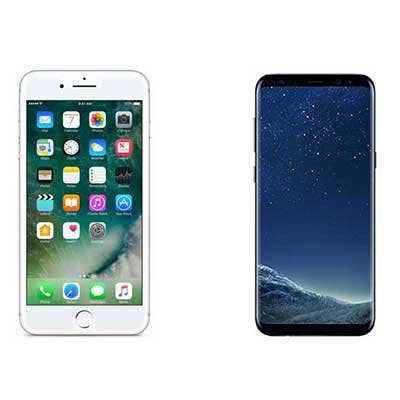
Face Off
While Apple fans will need to wait a bit longer to get their hands on the iPhone X, the iPhone and 8 and iPhone 8 Plus started rolling out to customers on Friday. The devices come to market during a year that's already seen a number of major launches in smartphones, including Samsung's Galaxy S8 and S8 Plus in the spring. How do the larger-screened models of the Apple and Samsung smartphone lines stack up? In the following slides, the CRN Test Center compares Apple's iPhone 8 Plus vs. the Samsung Galaxy S8 Plus on specs and price.
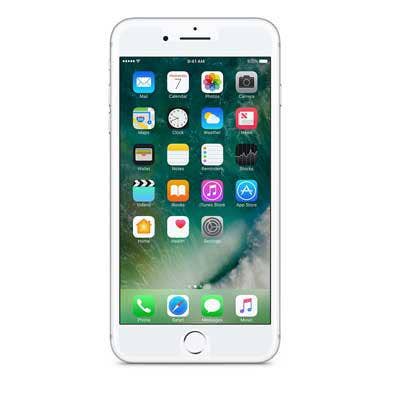
Display
Last year at this time, the largest-screened models in the iPhone and Galaxy S lines were the same size (5.5 inches). Samsung switched things up this year with the Galaxy S8 Plus, which moved up to a 6.2-inch display. The iPhone 8 Plus, meanwhile, remains at 5.5 inches. The iPhone 8 Plus also sticks to the familiar bezels above and below the display, while the Galaxy S8 Plus nearly eliminates the bezels around the display (the S8 Plus screen covers 83 percent of the front of the phone).
In terms of display technology, the S8 Plus features a Super AMOLED display with 2,960 x 1,440 resolution, and includes curved glass that tapers over the edges of the phone. Apple goes with the standard 1,920 x 1,080 display of previous iPhone Plus models on the 8 Plus. While that's fewer pixels, Apple's bright and colorful Retina technology has helped keep the lower-res iPhone displays popular with users.
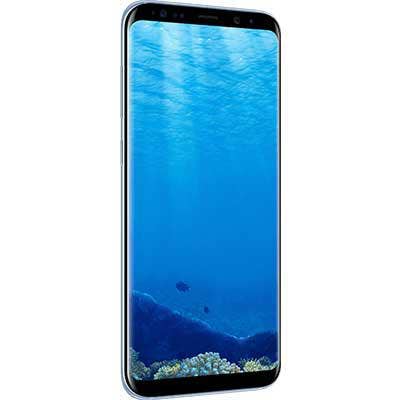
Overall Size
One of the key advantages of the Galaxy S8 Plus is that while its display is significantly larger than that of the iPhone 8 Plus, the overall size isn't, thanks to the edge-to-edge design. The Galaxy S8 Plus measures 6.28 inches x 2.89 inches, equaling 18.15 square inches on one side. By comparison, the surface area of the iPhone 8 Plus is actually a bit larger; the device measures 6.24 inches x 3.07 inches, equaling 19.16 square inches on one side.
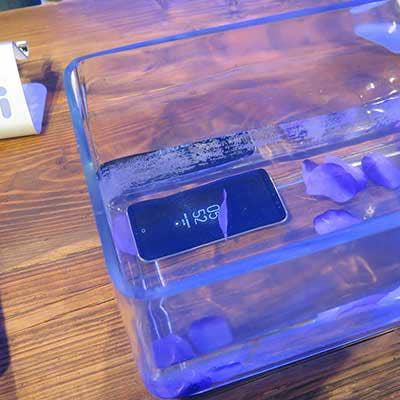
Body
Both the iPhone 8 Plus and Galaxy S8 Plus feature glass on both sides of the phone, but the S8 Plus comes out the winner in terms of water resistance. The device comes with an IP68 rating, meaning it's been certified to survive a half hour of submersion. The waters can be as deep as 5 feet, too. The iPhone 8 Plus has the lesser rating of IP67 -- meaning it promises to withstand 3.3 feet of water for that amount of time.
Also worth noting: Samsung has retained the 3.5 mm headphone jack in the Galaxy S8 Plus, while Apple has continued to exclude the headphone jack in the iPhone 8 Plus.
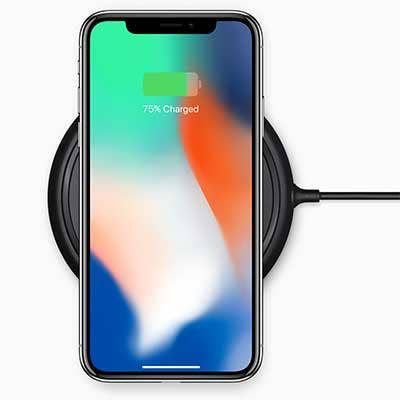
Processor & RAM
Both the Galaxy S8 Plus and iPhone 8 Plus come with processors that boast impressive performance and battery efficiency. The S8 Plus includes the eight-core Qualcomm Snapdragon 835, while the iPhone 8 Plus comes with Apple's new six-core A11 Bionic. Both offer terrific speed—though Samsung does include more RAM in the S8 Plus, 4GB, than Apple does in the iPhone 8 Plus, which has 3GB of RAM.
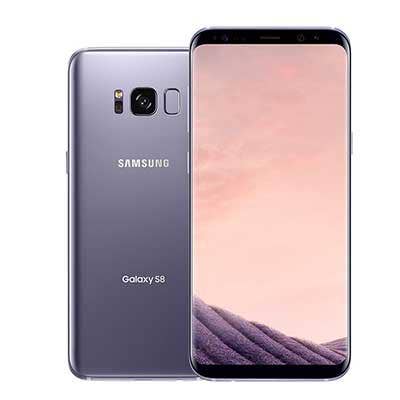
Battery Life & Charging
The Galaxy S8 Plus comes out ahead in terms of battery life promises, with Samsung pledging up to 16 hours of usage on LTE or 14 hours on 3G for the phone. Apple, by comparison, promises up to 13 hours of Internet usage on the iPhone 8 Plus (no breakouts by LTE or 3G).
As mentioned, both devices feature glass on their backs, which enables wireless charging (now available for the first time in Apple smartphones). Both the iPhone 8 Plus and Galaxy S8 offer Qi wireless charging, which involves laying the phone down on a charging pad. Both smartphones also support fast-charging, though iPhone 8 Plus users need to buy a USB-C adapter and Lightning-to-USB-C converter.
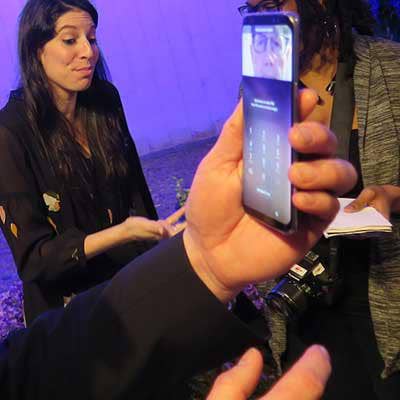
Biometrics
Fingerprint scanning remains the sole biometric authentication option for the iPhone 8 Plus (you won't be able to get Face ID facial recognition on an iPhone until the iPhone X comes out in November). On the Galaxy S8 Plus, fingerprint scanning is just one of three biometric log-in options—the others being facial recognition and iris scanning.
Worth noting: the fingerprint scanner on the Galaxy S8 Plus is located on the back of the device, as a result of the edge-to-edge display and removal of the home button.
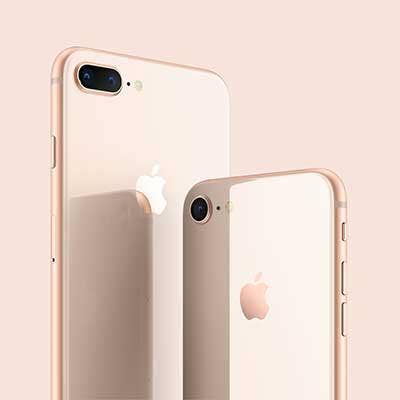
Camera
The camera is one area where the iPhone 8 Plus gets a leg-up on the Galaxy S8 Plus, thanks to the dual-camera setup on the Apple device. The iPhone 8 Plus includes a wide-angle camera and a telephoto camera in the rear, and both are 12-megapixel cameras. Along with optical zoom, 10X digital zoom and optical image stabilization, the iPhone 8 Plus camera includes features such as "portrait lighting," which improves the lighting of the contours over a subject's face in real time. The cameras are also specially calibrated for use with augmented-reality apps, according to Apple.
By comparison, the Galaxy S8 Plus includes a 12-megapixel rear camera with dual-pixel technology, which has benefits including compensating for poorly lit situations.
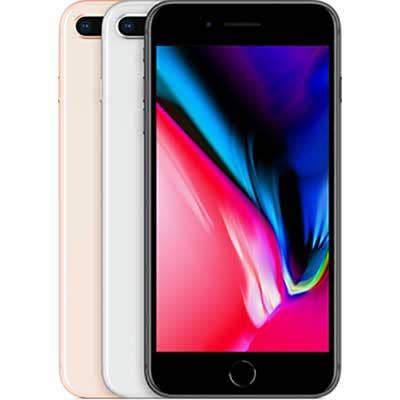
Storage
Apple offers two configurations for the iPhone 8 Plus in terms of storage -- 64GB and 256GB (the iPhone 7 Plus, by contrast, had come in 32GB, 128GB, and 256GB models). Samsung has the same starting level of storage for the Galaxy S8 Plus, 64GB. However, the S8 Plus has the option of expansion by up to 256GB with a microSD card.

Price & Bottom Line
Apple's iPhone 8 Plus and Samsung's Galaxy S8 Plus are comparable on price. An unlocked iPhone 8 Plus has a starting price of $799 from Apple, while the Galaxy S8 Plus is priced just a bit higher at $824.99 unlocked from Samsung.
For users who are open to either Android or iOS as a platform, the Galaxy S8 Plus may be the better value given its significantly larger screen (with OLED technology), storage expandability, water resistance, and battery life. Users that prioritize the best possible camera in their smartphone, however, may be better served by going with the iPhone 8 Plus.